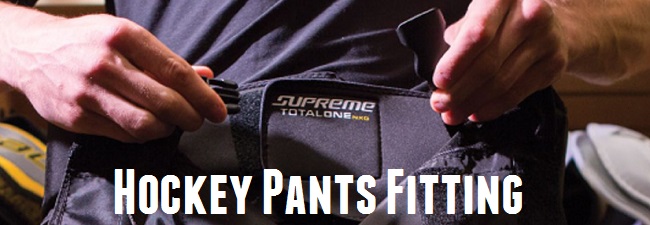
Hockey Pants Sizing and Buying Guide
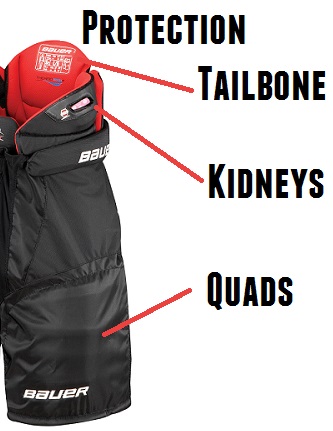 Hockey pants are primarily designed to protect three high-risk areas on your lower body – hips / kidneys, front thighs, and tailbone – against falls, shots, slashes, and hits. In addition, some pants will have minor padding in other areas as well.
Hockey pants are primarily designed to protect three high-risk areas on your lower body – hips / kidneys, front thighs, and tailbone – against falls, shots, slashes, and hits. In addition, some pants will have minor padding in other areas as well.
In this article we will cover
- Popular brands of Hockey Pants
- Price
- Difference in Materials
- Sizing and Fit
- Personal preferences
- Lifetime and General Care
- Recommendations
- Tips for buying
Popular brands of Hockey Pants
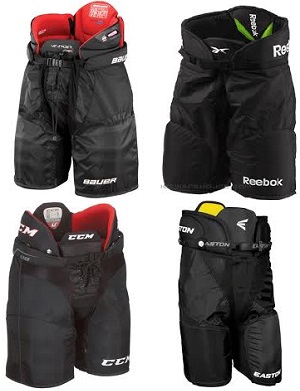 The most common brands are:
The most common brands are:
- Bauer (Supreme, Vapor, Nexus)
- CCM (Super Tacks, Jetspeed, Quicklite)
- Warrior (Covert)
- Sher-Wood, Winnwell, Graf, and Powertek are also around, although not as common.
- Reebok (Now under CCM name)
- Easton (now owned by Bauer – Stealth, Mako)
Difference in material / features among price ranges
All pants will have three main materials – a nylon fabric shell, armored plastic/foam padding, and stretch material for mobility. Traditional style pants will build all three of these into one, while girdle pants have a separate, removable nylon shell and a tight-fitting inner liner which contains padding and Spandex-type stretch material.
Stretch fabric: This is located primarily on the underside of the pant in the crotch/inner leg area. It allows for mobility and long strides during play, and also helps with breathability. Some of the cheapest pants only have one piece of stretch fabric running front to back, while most have 4-way stretch (a plus-shape of stretch fabric running front/back and left/right). High-end pants may have additional stretch or vent mesh panels in other places too.
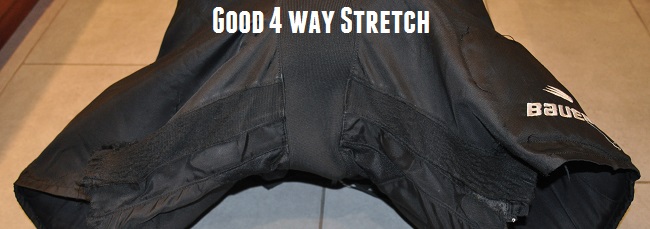
Padding: All pants will have pads in at least 5 areas: one on each hip, one on each thigh, and one in the tailbone (usually segmented). Higher-quality pants will have thicker pads in these areas, and may also have extra padding in places such as the space between the hip and thigh pads.
Shell: Better pants will have thicker, more durable nylon shells, helping with longevity and cut resistance. They can also have zippers on the inner leg for those who like putting on their pants after their skates.
Hockey Pants Sizing & Fit
Most pants come in the standard XS-XXL size designation, although each brand will fit differently. Tackla and some pro stock pants will use European sizing (eg. 52), which you can convert using charts online.
When fitting your pants, there are a couple things to look for
The pants should be snug enough around the waist that they won’t fall down during play. If you like a loose fit, suspenders are an option for you.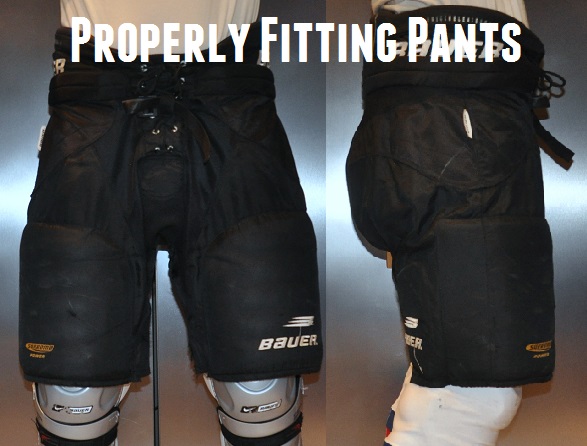
The bottom of the pant should rest somewhere between the middle and top of your kneecap when your legs are straight. If they’re too long, your mobility will be restricted, and if they’re too short, you will have gaps in your protection.
They should be comfortable to move around in – try doing various stretches to see how easy it is to move.
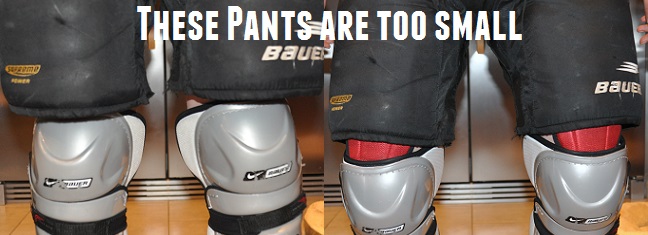
What if you’re skinny and everything feels too loose?
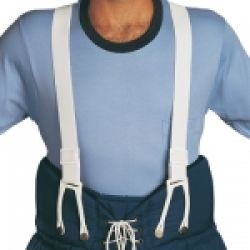 First of all, try finding a pant made to fit tall players. For example, the Easton Stealth 75s is made in regular and tall options, so it’s a good choice for skinny players. Higher-end Reebok pants also have a built-in zipper around the waist which allows you to increase their length.
First of all, try finding a pant made to fit tall players. For example, the Easton Stealth 75s is made in regular and tall options, so it’s a good choice for skinny players. Higher-end Reebok pants also have a built-in zipper around the waist which allows you to increase their length.
If you can’t find anything that fits well, go for a proper length fit first, and wear hockey suspenders (usually available for around $12). If you try to fit width at the expense of height, your pants won’t protect you properly at the knees.
Expected lifetime, general care & maintenance for Hockey Pants
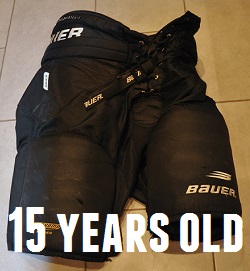 Overall, hockey pants are easy to take care of. You should dry them out promptly after use and inspect them occasionally for damage.
Overall, hockey pants are easy to take care of. You should dry them out promptly after use and inspect them occasionally for damage.
If you find rips, get them patched up before they get too big. If you do this, a decent pair of pants can easily last a decade or more. The ones in the sizing pictures are close to 15 years old.
Recommendations
If you’re new to skating, something with a decent tailbone protector is a good idea. (you will fall on your butt!)
If you block shots, something with a good thigh pad is recommended. If you get bumped around or cross-checked a lot when fighting for position in front of the net, look for something with a large tailbone/lower spine protector which leaves minimal gap below your shoulder pads.
Pants with only minimal stretch fabric on the bottom can get restrictive and uncomfortable. Try to find something with the full plus-shaped (4-way) stretch bottom.
Buying used Hockey Pants
Picking up used pants can be quite cost-effective, since their overall construction hasn’t changed much in the last few decades and they tend last a very long time. Just make sure to check to that they’re in good condition.
Here are a few things to look for when shopping for used hockey pants:
No plastic inserts should be missing – There shouldn’t be any major rips anywhere (or if there are, they should be easily fixable).
Pay particular attention to the underside near the crotch and inner legs, because this is an easy area to overlook. Rips in the stretch fabric are nearly impossible to patch effectively, because doing so will make them less stretchy.
The zippers (if any) on the inner thigh should close all the way: In some leagues, having open thighs isn’t allowed and you will be kicked out if the ref notices. It may also be possible to sew up at your LHS if the zipper is stuck open or the shell is cut.

